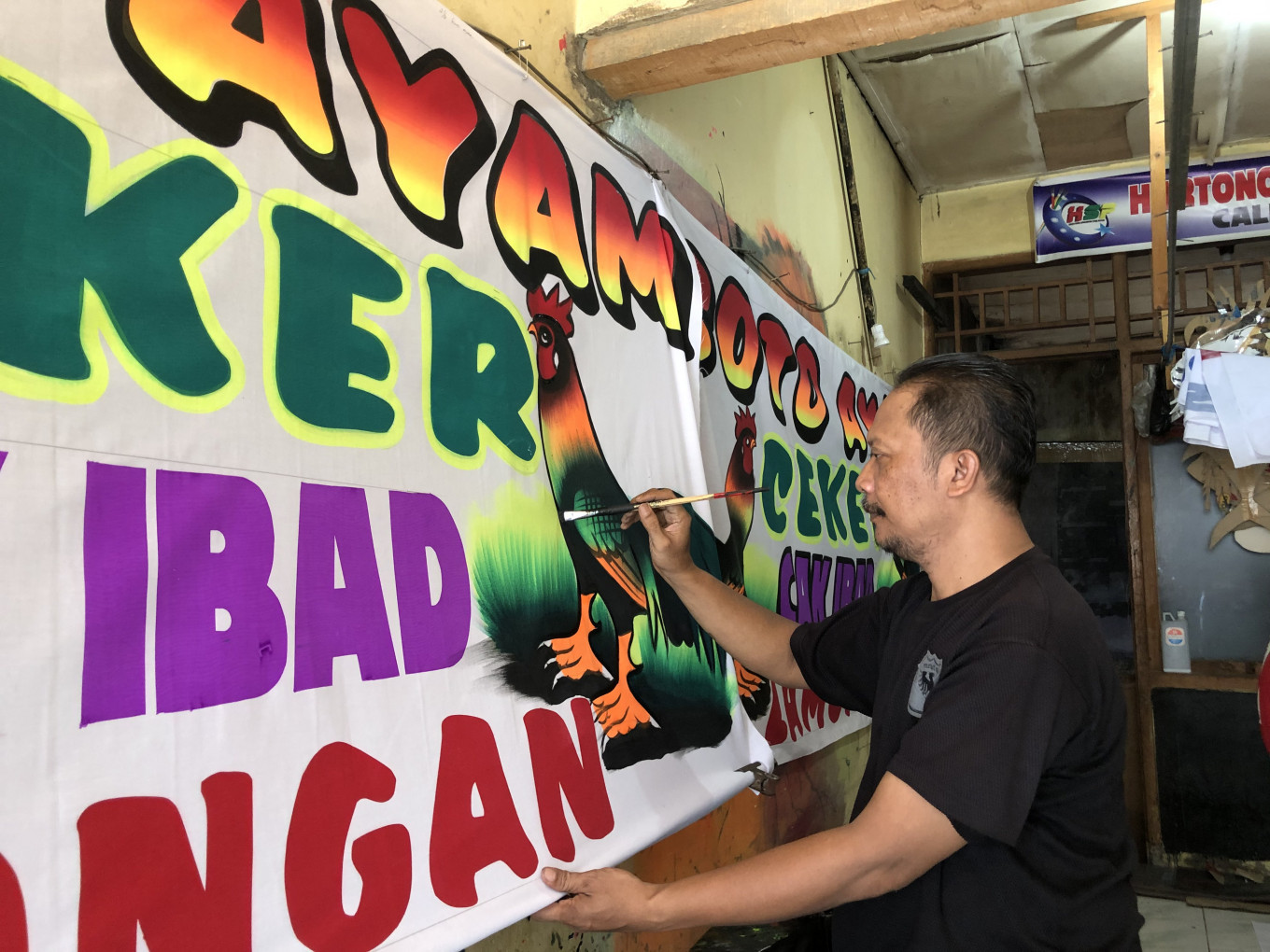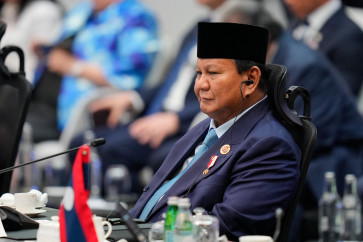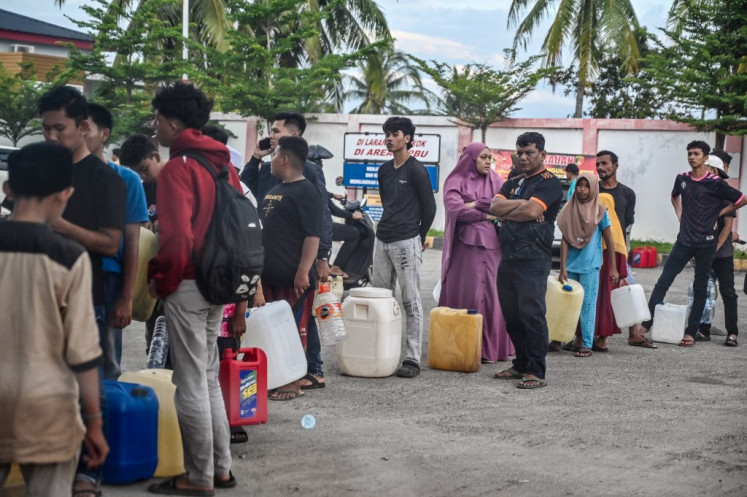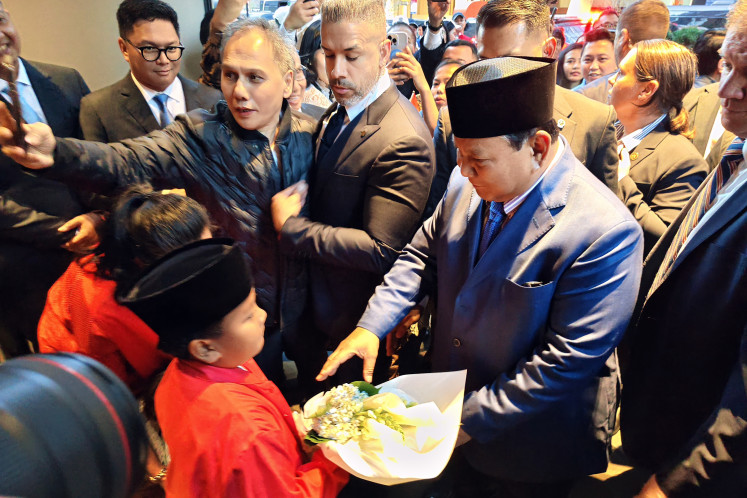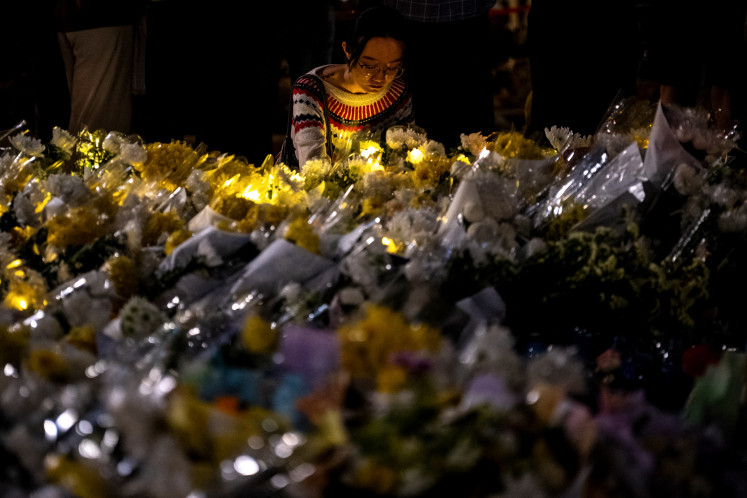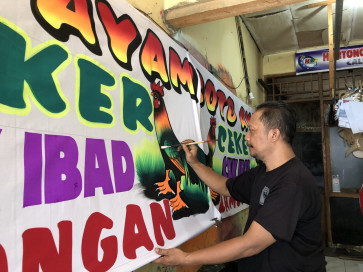Popular Reads
Top Results
Can't find what you're looking for?
View all search resultsPopular Reads
Top Results
Can't find what you're looking for?
View all search resultsIconic banners of ‘pecel lele’ vendors symbol of Lamongan people’s struggle
“The banners that you see in Jakarta underwent a long journey before being known by the public as they are today,” Hartono, a 50-year-old banner maker in Pekayon, Bekasi, West Java, told The Jakarta Post on Wednesday. “The banners are not just regular fabric. They represent the struggle and hopes of the Lamongan people to be successful in a big city like Jakarta,” he added.
Change text size
Gift Premium Articles
to Anyone
A
common sight in Jakarta are the many food stalls displaying banners featuring images of catfish and chickens that are set up on sidewalks, enlivening the capital city’s frantic streets every evening.
While famous for their pecel lele (fried catfish), the vendors, who typically come from Lamongan, East Java, also serve pecel ayam (traditional fried chicken) and soto ayam (chicken soup served with noodles). The dishes are common favorites among Jakartans, with customers typically paying less than Rp 30,000 (US$2.14) per portion.
Customers have probably also noticed that these stalls display similar banners, even if they have no relation to each other. The banners, which are usually placed at the front and two sides of each stall, always consist of a white background, with striking-colored lettering and images of catfish and chickens to represent the dishes they serve.
These banners have become a symbol of Lamongan people in Jakarta, with the vendors pledging to maintain the classic style, despite the ease of producing new banners instantly with digital printing devices.
“The banners that you see in Jakarta underwent a long journey before being known by the public as they are today,” Hartono, a 50-year-old banner maker in Pekayon, Bekasi, West Java, told The Jakarta Post on Wednesday. “The banners are not just regular fabric. They represent the struggle and hopes of the Lamongan people to be successful in a big city like Jakarta,” he added.
Hartono, who comes from Lamongan and has been living in Jakarta for almost 30 years, said the history of the banners stemmed from Lamongan migrants who sought better opportunities in Jakarta in the 1970s.
During this time, Lamongan people believed they could offer their version of soto ayam to Jakartans, as the dish tasted different to all other food available at the time. However, they had to name the dish soto Surabaya instead of soto Lamongan as many Jakartans did not know where Lamongan was and only knew about Surabaya, the capital of East Java, which is located around 50 km away from the regency.

